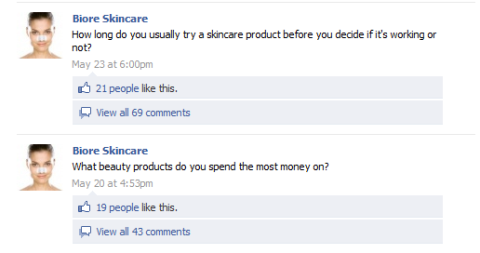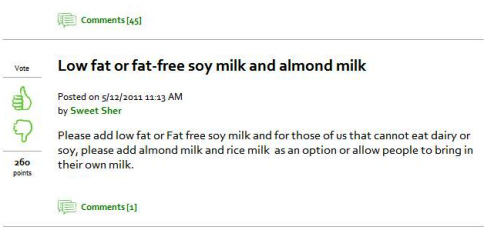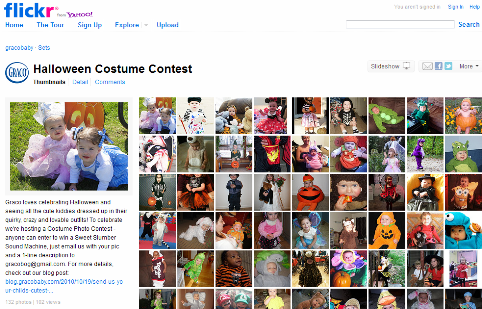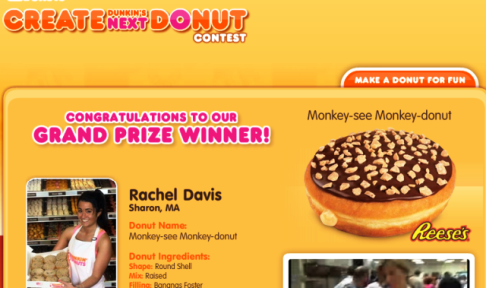 Are you familiar with crowdsourcing? Do you know what the benefits are?
Are you familiar with crowdsourcing? Do you know what the benefits are?
Social media has changed the way businesses engage with consumers—fans and followers don't want to be told, they want to discover. It's no longer a one-way (or even a two-way) conversation.
It's now a multiplayer experience that relies on collective, thoughtful engagement.
Consumers have the tools, time and desire to be involved on a much deeper level than we've ever seen before. There are several distinct ways that you can take these ideas and build social media campaigns that use existing tools and technologies to achieve powerful results.
Today, brands big and small are homing in on the tactic of crowdsourcing, defined as the act of outsourcing tasks traditionally performed by an employee or contractor to an undefined, large group of people or community (a “crowd”), through an open call. Hidden within this utilitarian definition are powerful cultural drivers that can be catalyzed to achieve powerful social engagement and activation.
What's the benefit of crowdsourcing?
As the evolving relationship between consumers and brands brings everyone closer together, interactions and relations will continue to become more and more complimentary each time, giving and taking equally and fairly. You can turn consumers into brand advocates by getting them involved and engaged.
It's at the intersection of these ideas where a powerful and new way to socially activate and engage consumers exists. It's time to get your consumers talking—so connect with your crowd when you're using social media.
Alex Bogusky and John Winsor wrote in their book Baked In about organizational intelligence, saying, “The intelligence of the whole can differ wildly based on who is connected and to whom and how.” By extension, we can say that if a company is disconnected from its consumers, the organizational IQ suffers.

Below are three principles of crowdsourcing that can be used on or in tandem with social media platforms like Facebook, Twitter, YouTube and blogs.
#1: Ask for feedback (then do something with it)
Your business might say, “We listen to our customers, and your feedback is always welcome.” Well, that's great, and listening is the first step, but without follow-up action, you'll leave your customers feeling short-changed. The gap between satisfied and disappointed is easily closed, yet it's often left wide open. This is a wasted opportunity.
Asking open-ended questions on your social media sites is a way to not only close the gap, but also create a program that turns the act of collecting and reacting to feedback into a marketing campaign of activation and engagement.

For example, ask fans when or why they first had a need for your product or service. You've not only connected with your online audience, but also gained valuable insight into the thought process of your constituents.
Starbucks executed this idea of using consumer feedback with “My Starbucks Idea.”

The site allows users to submit suggestions to be voted on by Starbucks' consumers, and the most popular suggestions are highlighted and reviewed. Starbucks then took it a step further and added an “Ideas in Action” blog that gives updates to users on the status of changes suggested.
Get World-Class Marketing Training — All Year Long!
Are you facing doubt, uncertainty, or overwhelm? The Social Media Marketing Society can help.
Each month, you’ll receive training from trusted marketing experts, covering everything from AI to organic social marketing. When you join, you’ll also get immediate access to:
- A library of 100+ marketing trainings
- A community of like-minded marketers
- Monthly online community meetups
- Relevant news and trends updates

Discover Proven Marketing Strategies and Tips
Want to go even deeper with your marketing? Check out the Social Media Marketing Podcast! Publishing weekly since 2012, the Social Media Marketing Podcast helps you navigate the constantly changing marketing jungle, with expert interviews from marketing pros.
But don’t let the name fool you. This show is about a lot more than just social media marketing. With over 600 episodes and millions of downloads each year, this show has been a trusted source for marketers for well over a decade.
#2: Create contests and giveaways
People love winning, and when they win prizes or discounts, they'll share the news with their friends. Consider implementing trivia promotions and offering reduced-price or free products or services as prizes to fans who identify the correct answer first. Using a contest application can give you everything you need to implement and manage a campaign.
One thing you want to be sure of is your ability to capture contact information for participants. Getting users' contact information allows you to plan for a post-event promotion. You'll know the participants have your brand top of mind at the end of your event, so having a special promotion ready to offer immediately following the event while you have the attention of the participants is critical.
You also want to be sure the platform you choose has all the social media sharing tools built in so participants can use Facebook and Twitter to let their social networks know about the contest. After all, turning participants into promoters is one of the main reasons to run a crowdsourcing campaign in the first place.
For example, create contests with a seasonal twist to get people talking, like a costume photo contest for your consumers and fans during Halloween. A brand that executed this concept is Graco baby products. They implemented a Halloween Costume Contest in 2010 on the brand's Flickr page and gave away a sound machine to the winner as an incentive for fans to participate.

Another great big-brand example of crowdsourcing with social media is Dunkin Donuts. DD created the “Create Dunkin's Next Donut” contest in 2010. The contest was a huge success, generating more than 130,000 donut submissions and 174,000 votes.

#3: Poll or survey your fans
Consumers love to give their opinion. They want to share their ideas, feelings and opinions in a quick, easy way that makes them feel like they're connecting with a brand. You can poll fans on anything; it makes them feel like their ideas, thoughts and feedback are appreciated.

For example, if you're a restaurant owner, consider polling fans on what seasonal dish they would like to see for the upcoming summer season. Polling or surveying fans and followers is the fastest way to structure an active conversation on a topic that you encourage.
Whether you're collecting user feedback, running crowdsourcing contests or polling your audience, you'll benefit greatly from making these types of campaigns recurring fixtures in your business's social media strategy.
While participation may not be where you'd like it for the first attempt, by repeating the programs on a regular basis, you'll condition your community to anticipate what's coming next and this will cause a steady increase in participation. So don't give up in the beginning. Trust that you have a clear understanding of the behaviors you're trying to solicit and that your community is eager to participate.
Resources
In this video interview you can learn how to turn your customers into raving fans and you can also read here how to use Twitter to connect with local customers.
Are you connecting with your crowd? What ideas or suggestions do you have? Leave your comments in the box below.
Photo from iStockPhoto.
Attention Agency Owners, Brand Marketers, and Consultants

Introducing the Marketing Agency Show–our newest podcast designed to explore the struggles of agency marketers.
Join show host and agency owner, Brooke Sellas, as she interviews agency marketers and digs deep into their biggest challenges. Explore topics like navigating rough economic times, leveraging AI, service diversification, client acquisition, and much more.
Just pull up your favorite podcast app, search for Marketing Agency Show and start listening. Or click the button below for more information.

